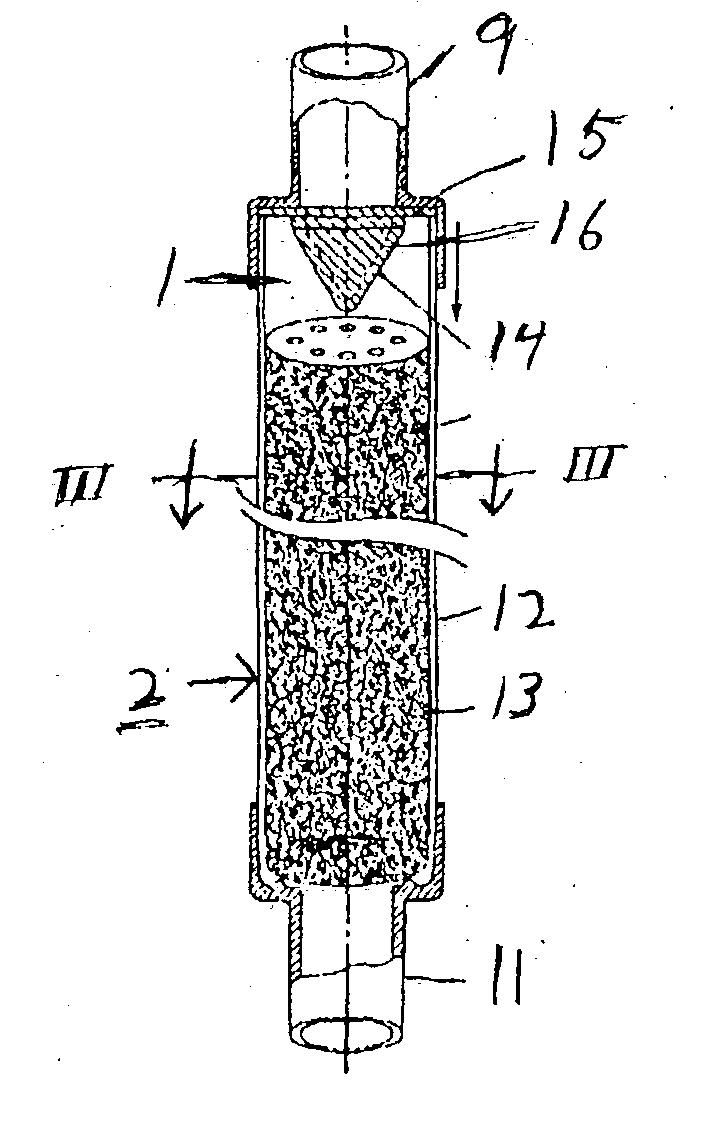Leg bad accessory
a technology for leg bags and accessories, applied in the field of leg bags, can solve the problems of significant increase in hospital mortality and disappointing, and achieve the effects of reducing hospital costs, convenient use, and improving care quality
- Summary
- Abstract
- Description
- Claims
- Application Information
AI Technical Summary
Benefits of technology
Problems solved by technology
Method used
Image
Examples
example 1
This example illustrates the ability of the accessory of this invention to protect a catheterized bladder from infection by blocking the ascending migration of bacteria from a contaminated leg bag. An in vitro model was used.
A antimicrobial composition was prepared of 7 wt % nanosize silver particles (from Nanopowder Industries, Israel), 18 wt % silver citrate (Aldrich), 36 wt % butyl parabens (Sigma Aldrich), 34 wt % citric acid (Sigma Aldrich), 0.25 wt % copper phthalocyanine (Aldrich, Minn.), 1.75 wt % polyethylene oxide (MW=100,000), and 3 wt % EDTA. The antimicrobial composition was blended as a fine powder and 68 gms of the powder was mixed with 386 gms of resin and pellets were formed by extruding at 180° F. The pellets were then extruded through an 7 lumen die at 170 to 200° F. to form the filter material. The filter material was packed into 4 inch long silicone tubes 0.5 inches in diameter which were connected to leg bags and catheters. The control accessories contained ...
example 2
This example illustrates the performance of the antimicrobial filter material when subjected to continuous daily challenge of bacteria in human urine medium as well as in synthetic urine containing a rich broth called Brain Heart Infusion Broth (BHIB) or TSB (Tryptic soy broth) that facilitates the growth of bacteria.
In this example, one inch long samples of the antimicrobial filter material prepared in Example 1 were cut, weighed, and placed in two culture tubes with 0.5 mL of filter-sterilized human urine (HU) or synthetic urine or synthetic urine (SU) containing BHIB. The urine was inoculated each with 1000 cfu / ml (colony forming units per ml) of three pathogens isolated from patients. (VA hospital-E. coli Hu734, a P. mirabilis strain, and Staphylococcus aureus). A tube containing only 0.5 ml of urine was prepared as a control and the organisms were inoculated. Each day samples were removed from the tubes, the media was replaced, and the samples were rechallenged. Aliquots wer...
example 3
This example illustrates the longevity of the antimicrobial action of the filter material when washed extensively with synthetic urine, simulating the daily urine flow output of about 1 L / day.
In long term wash and challenge studies, about 30 2-inch long pieces of the antimicrobial material of Example 1 and 30 2-inch long pieces of the control silicone were suspended and washed by gentle stirring in 1 L of filter sterilized simulated urine solution containing 1% TSB in a 1 L bottle. Both the controls and the antimicrobial material were suspended in the same bottle with change of solution every 24 hours. Duplicate samples at various time points were subjected to challenge by inoculation of clinical strains followed by incubation in real human urine. The clinical strains resistant to certain antibiotics tested were S. aureus, (SA), S. epidermidis, (SE), Coagulase negative Staph aureus (CN), Pseudomonas aeruginosa, Klebsiella pneumoniae, (KP), Vancomycin resistant enterococcus (EF), ...
PUM
 Login to View More
Login to View More Abstract
Description
Claims
Application Information
 Login to View More
Login to View More - R&D
- Intellectual Property
- Life Sciences
- Materials
- Tech Scout
- Unparalleled Data Quality
- Higher Quality Content
- 60% Fewer Hallucinations
Browse by: Latest US Patents, China's latest patents, Technical Efficacy Thesaurus, Application Domain, Technology Topic, Popular Technical Reports.
© 2025 PatSnap. All rights reserved.Legal|Privacy policy|Modern Slavery Act Transparency Statement|Sitemap|About US| Contact US: help@patsnap.com



